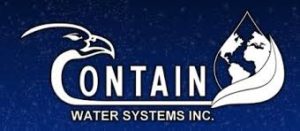 |
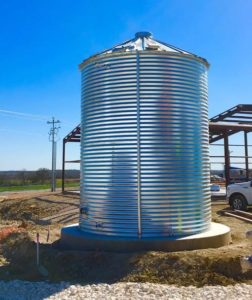
Seattle based RainBank Rainwater Systems, a Contain Water Systems Inc. distributor, is actively seeking bid requests for steel water tank sales and construction throughout the western region. Competitive pricing, 20 year warranty, and 15 years of experience make RainBank/Contain a smart choice for General Contractors whether for rainwater collection or fire suppression.
Contain Water Systems steel water storage tanks are ideal for any water storage applications where the intent is to store water for commercial or residential use. Structural and seismic engineering and full installation are available in Seattle and throughout the United States. Tank packages are delivered to your site where an experienced RainBank Rainwater Systems team will assemble, test, and certify that the tank has been built to Contain Water Systems’ quality standards. As a Contain Water Systems distributor, there is no middle man, which boosts affordability.
We install what we sell, NO subcontractors with inexperienced installers. We stand behind our product and installation with an unmatched 20 year warranty. Safety is always a priority with RainBank Rainwater Systems and Contain Water Systems has met that challenge with the only ground level, through the liner access panel, eliminating confined spaced entry during construction and maintenance or inspections. Contain Water Systems tanks & accessories are designed and engineered for all water storage needs including rainwater collection, stormwater management, fire protection, irrigation, agriculture, and mining.
Click here for a link that carries specification, sizes, and more information on Contain Water tanks.

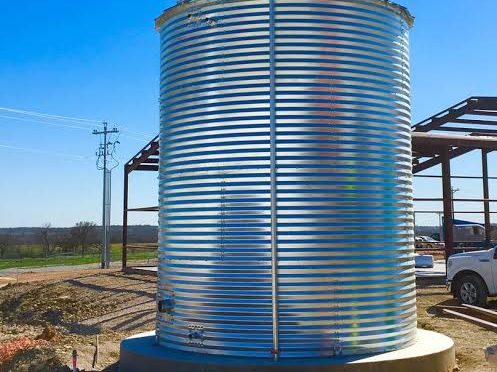
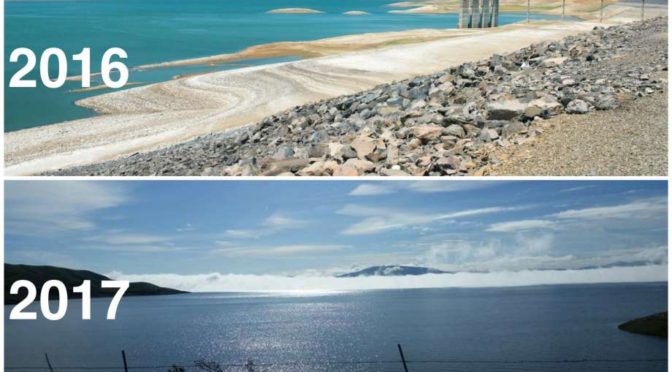
 While the California drought may have significantly improved with recent heavy rain and snowfall, it would be a stretch to declare it over. A series of Pacific rain filled storms have increased the storage in reservoirs, lakes and snowpack, but the need for continued conservation is still advised. Large, infrequent rain events do little for long term supply demands. A good deal of the event simply equates to stormwater with little effect on the aquifers. According to
While the California drought may have significantly improved with recent heavy rain and snowfall, it would be a stretch to declare it over. A series of Pacific rain filled storms have increased the storage in reservoirs, lakes and snowpack, but the need for continued conservation is still advised. Large, infrequent rain events do little for long term supply demands. A good deal of the event simply equates to stormwater with little effect on the aquifers. According to 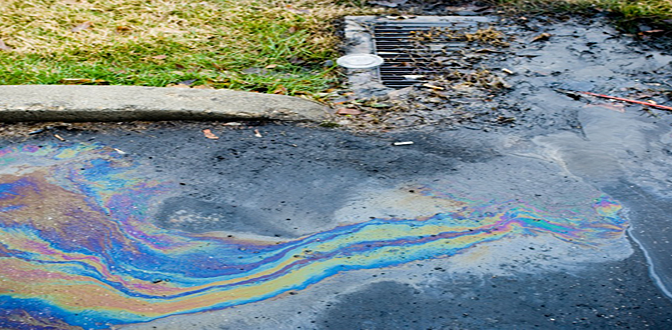
 The new Seattle 2016 Stormwater and Drainage code is prompting many architects to include detention/infiltration systems into their residential designs to mitigate unwanted roof runoff. This typically incorporates roof runoff to be collected temporarily, in above ground storage, to be slowly released into an infiltration system on site. This can be a series of infiltration ditches or some type of rain garden. During the dry season, the stored water can be used for irrigation. However, a problem with this theory is that storage for this type of system is usually inadequate in volume to accommodate much irrigation during the dry periods. Rule of thumb for irrigation requirements are .623 gallons per square foot of planting area per week, or 1″ of rainfall for the healthy growth of plants. This can add up rather quickly; 1,000 square feet of planting requires 623 gallons per week, 2,500 gallons for 1 month or 7,500 gallons for the typical 3 month dry season.
The new Seattle 2016 Stormwater and Drainage code is prompting many architects to include detention/infiltration systems into their residential designs to mitigate unwanted roof runoff. This typically incorporates roof runoff to be collected temporarily, in above ground storage, to be slowly released into an infiltration system on site. This can be a series of infiltration ditches or some type of rain garden. During the dry season, the stored water can be used for irrigation. However, a problem with this theory is that storage for this type of system is usually inadequate in volume to accommodate much irrigation during the dry periods. Rule of thumb for irrigation requirements are .623 gallons per square foot of planting area per week, or 1″ of rainfall for the healthy growth of plants. This can add up rather quickly; 1,000 square feet of planting requires 623 gallons per week, 2,500 gallons for 1 month or 7,500 gallons for the typical 3 month dry season.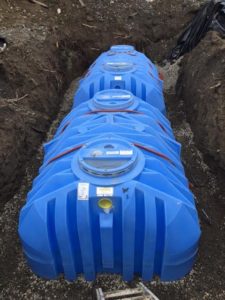 Rainwater system storage can be underground, where detention tanks cannot. The visual impact and space requirements are reduced, costs are reduced with a return on investment, environmental impacts are reduced, and conservation of city water is enhanced.
Rainwater system storage can be underground, where detention tanks cannot. The visual impact and space requirements are reduced, costs are reduced with a return on investment, environmental impacts are reduced, and conservation of city water is enhanced.